Report from Colin Bishop (Orginally published in 2008)
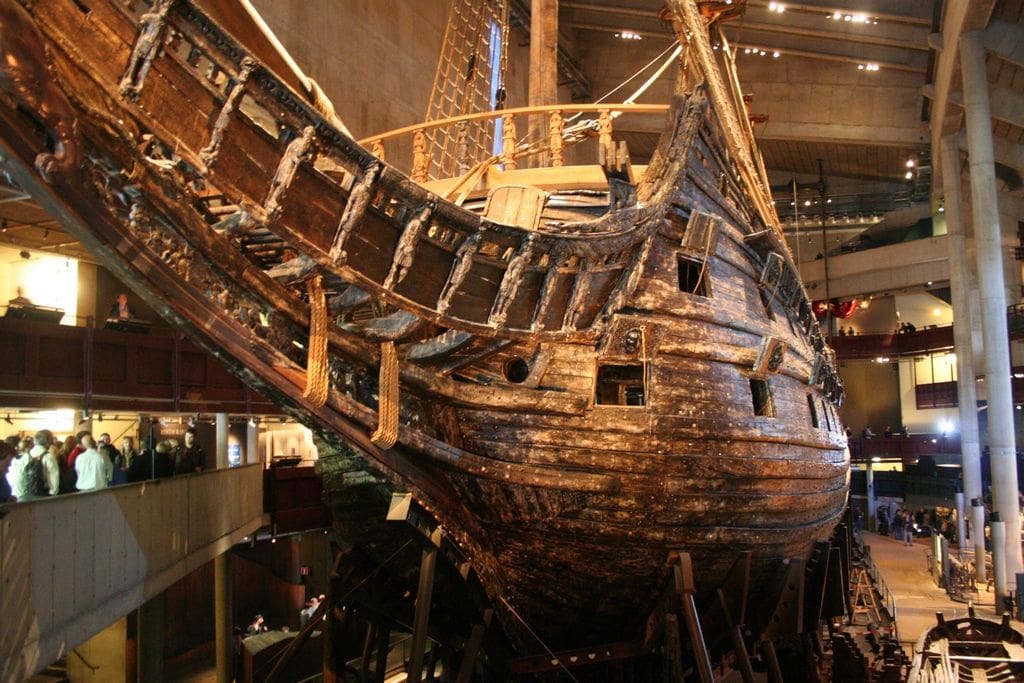
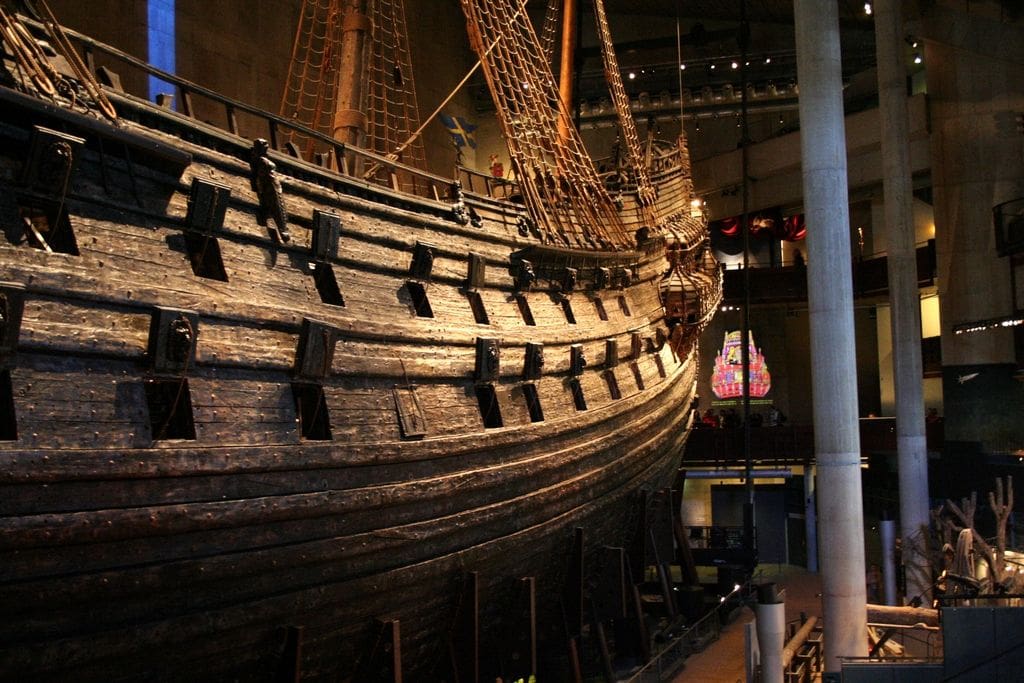
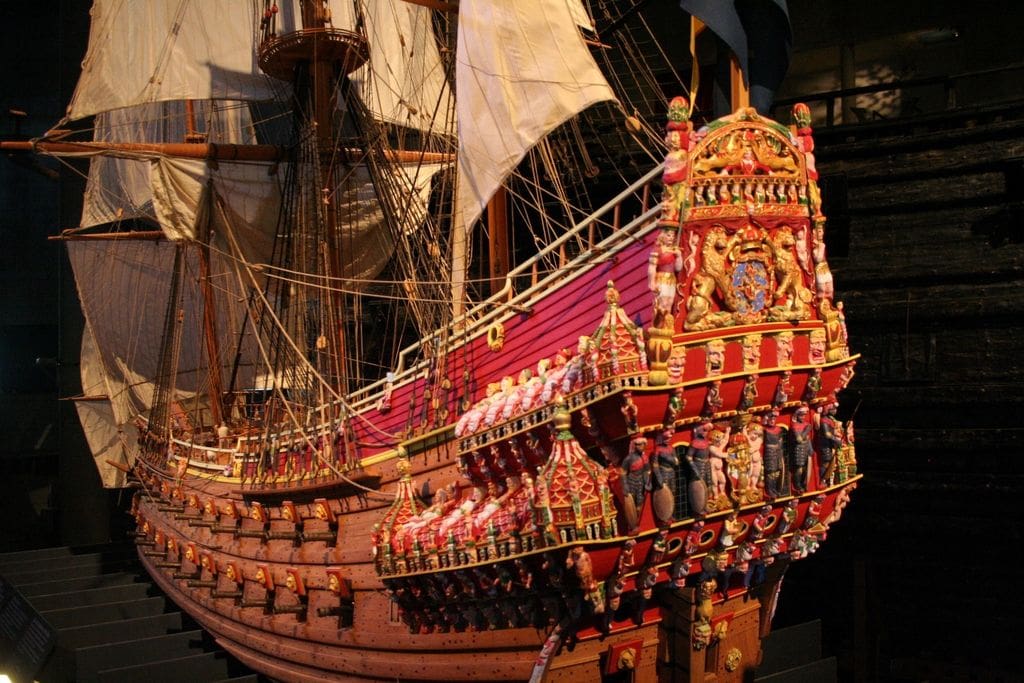
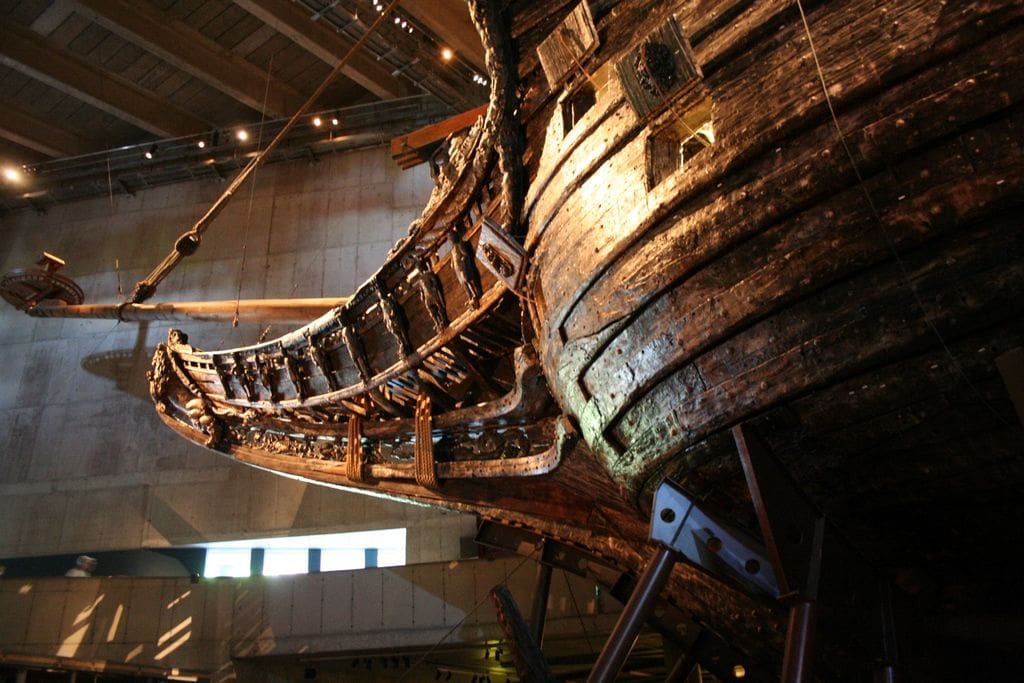
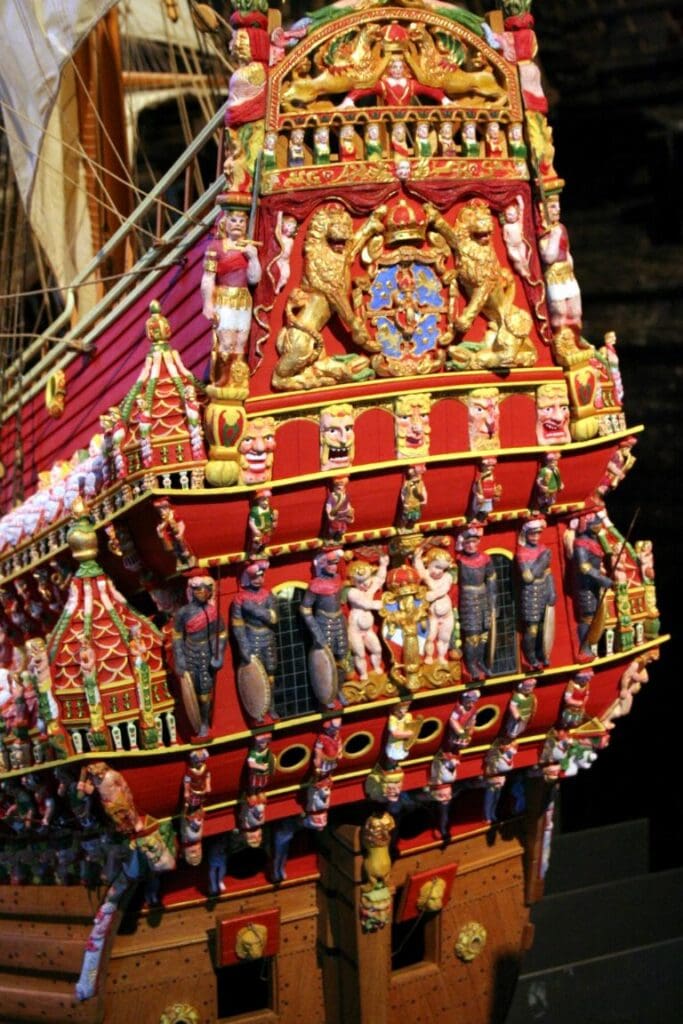
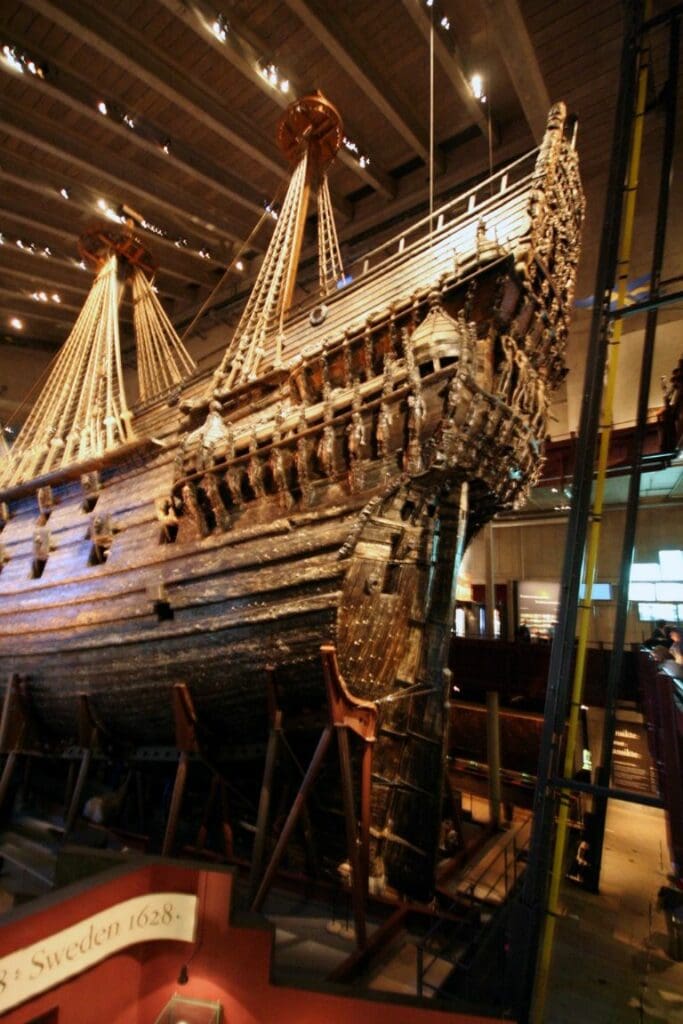
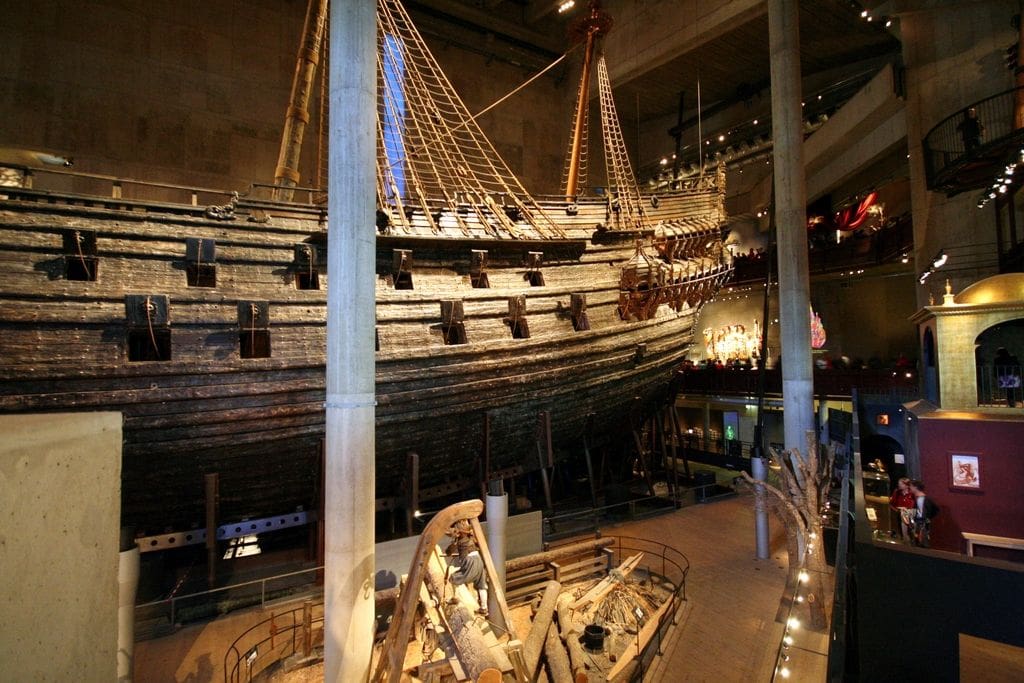
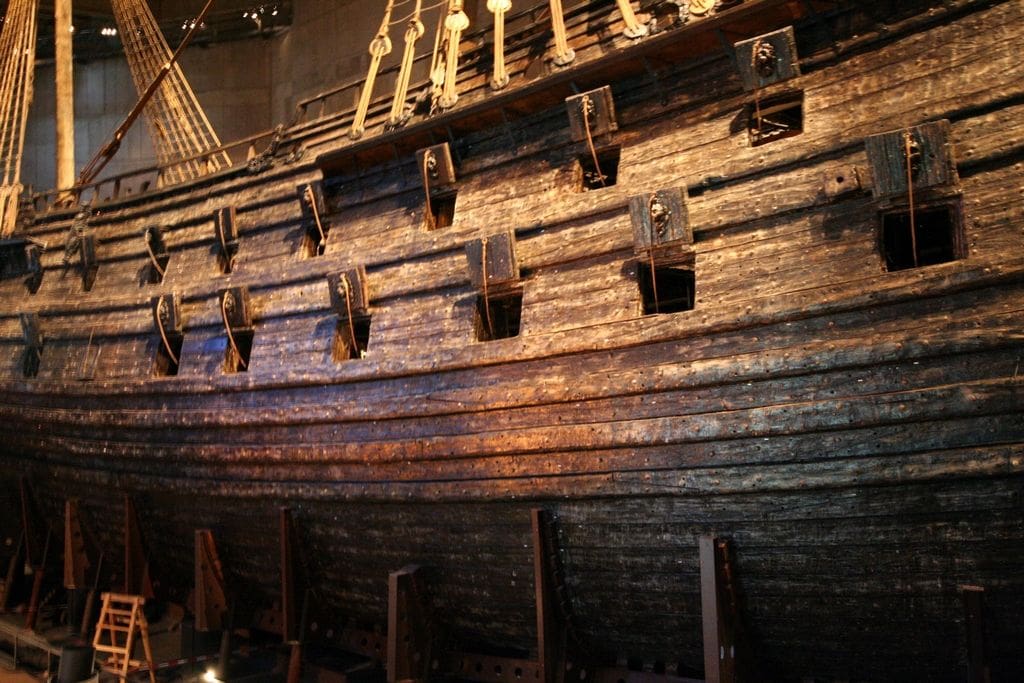
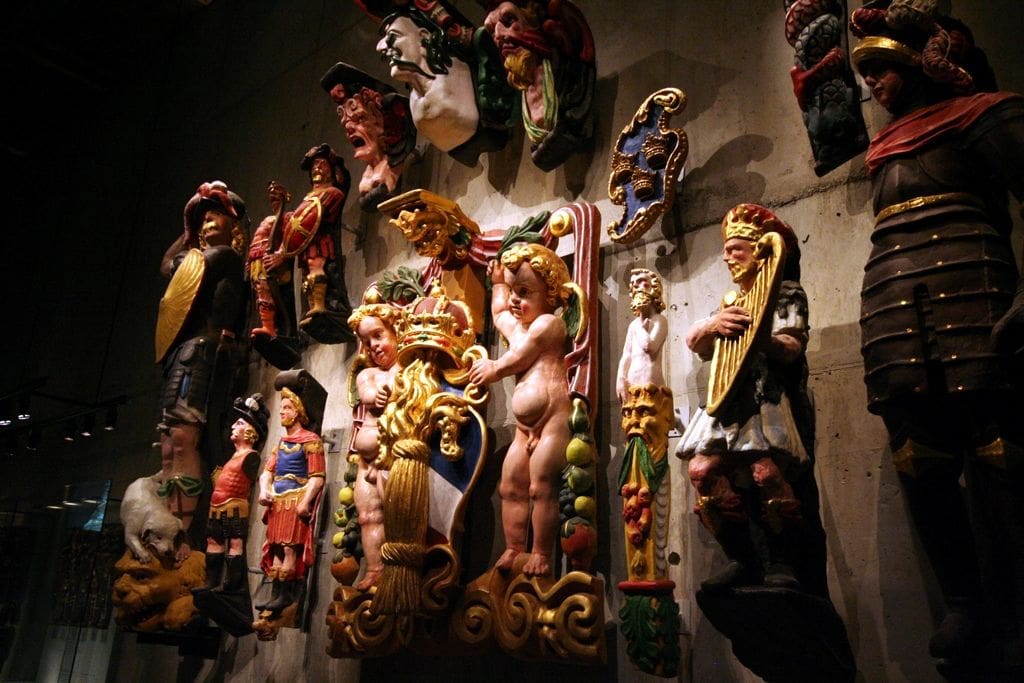
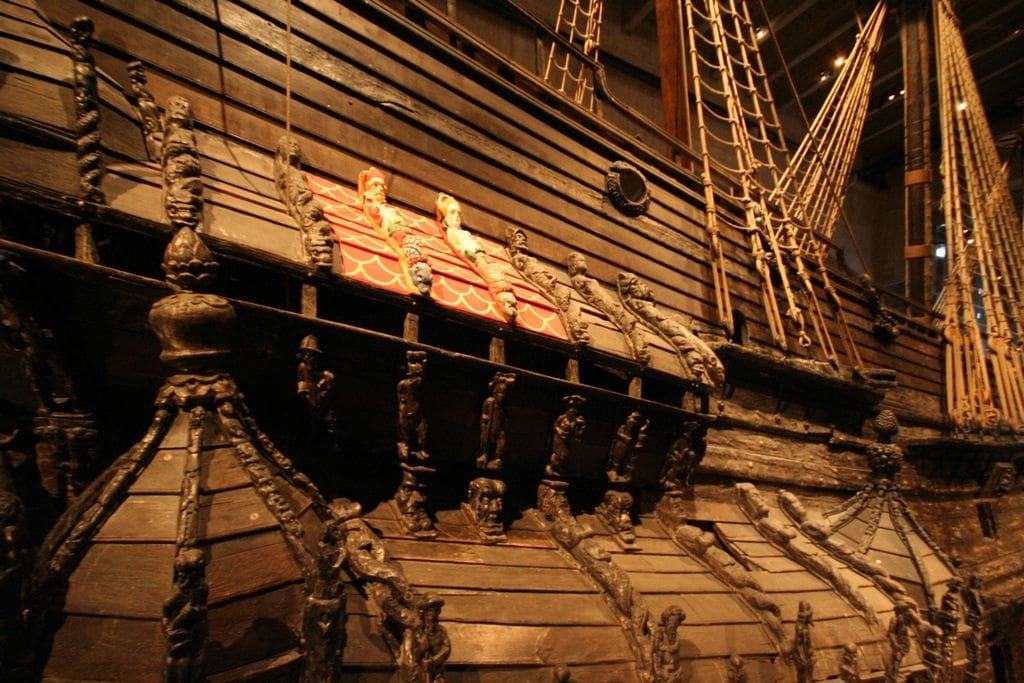
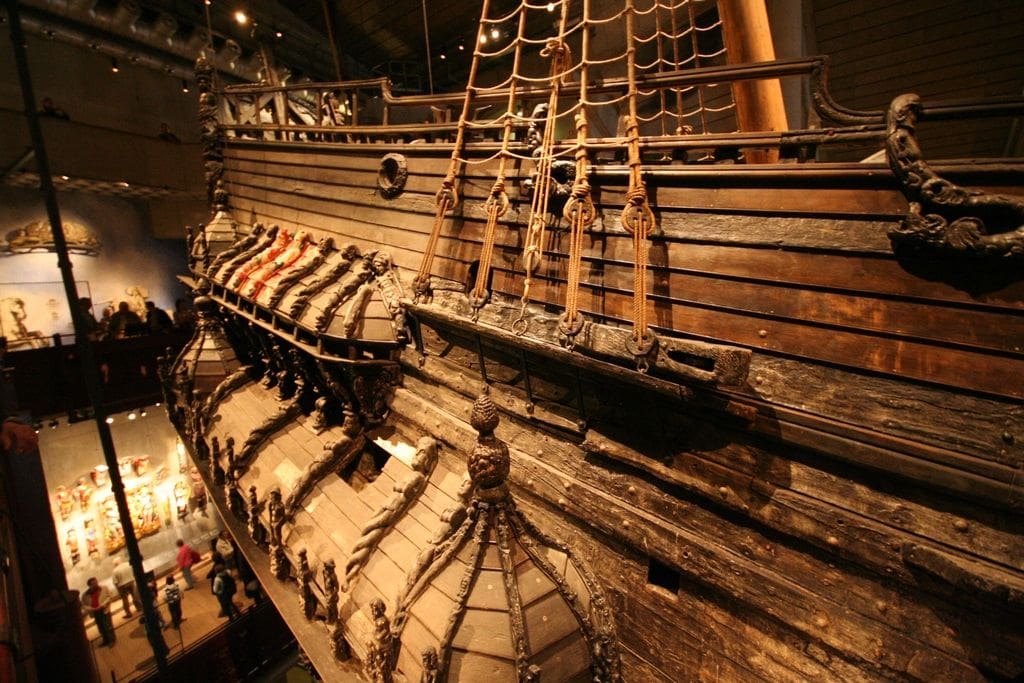
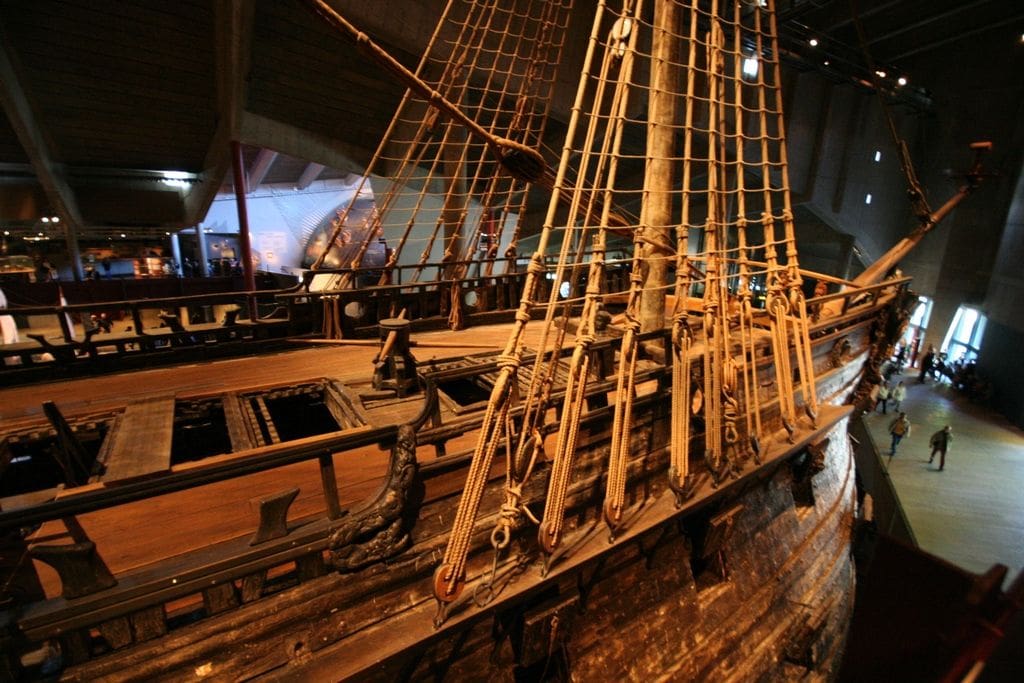
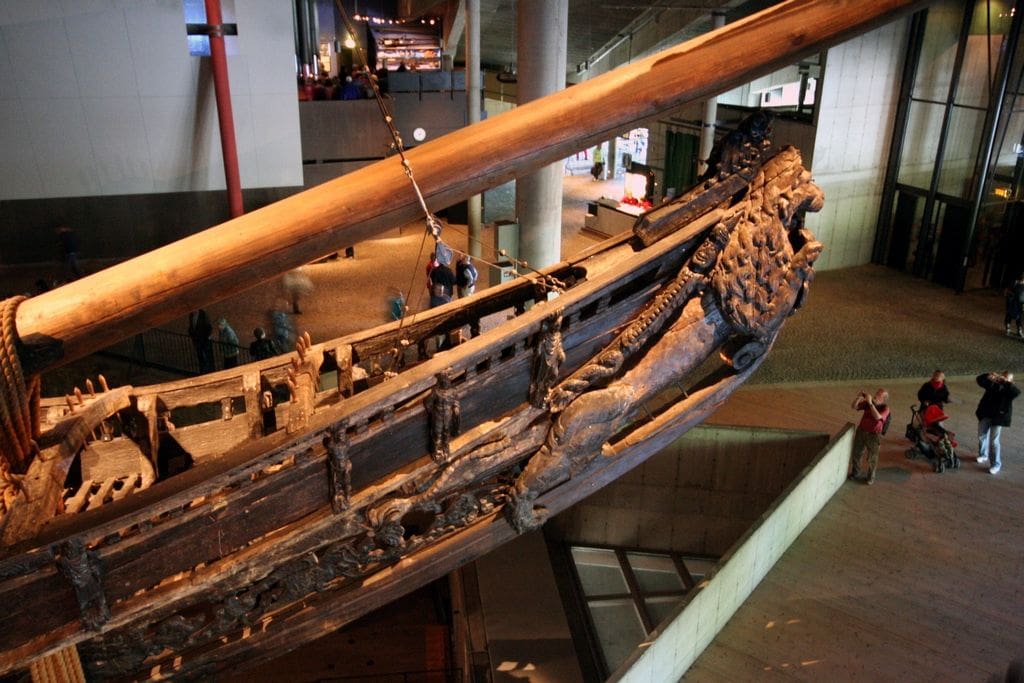
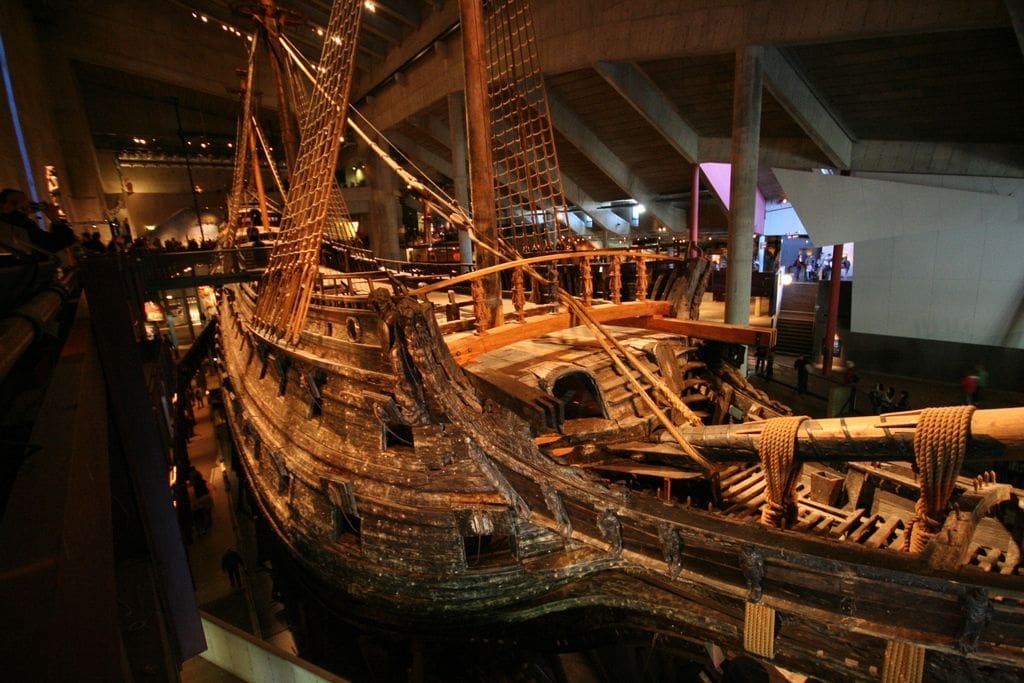
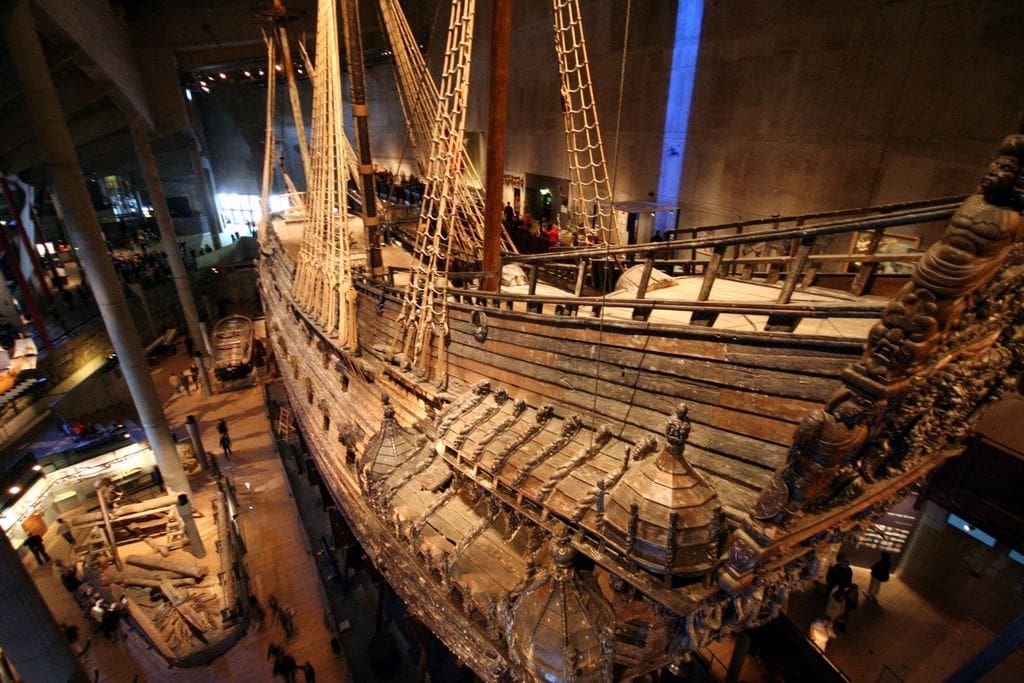
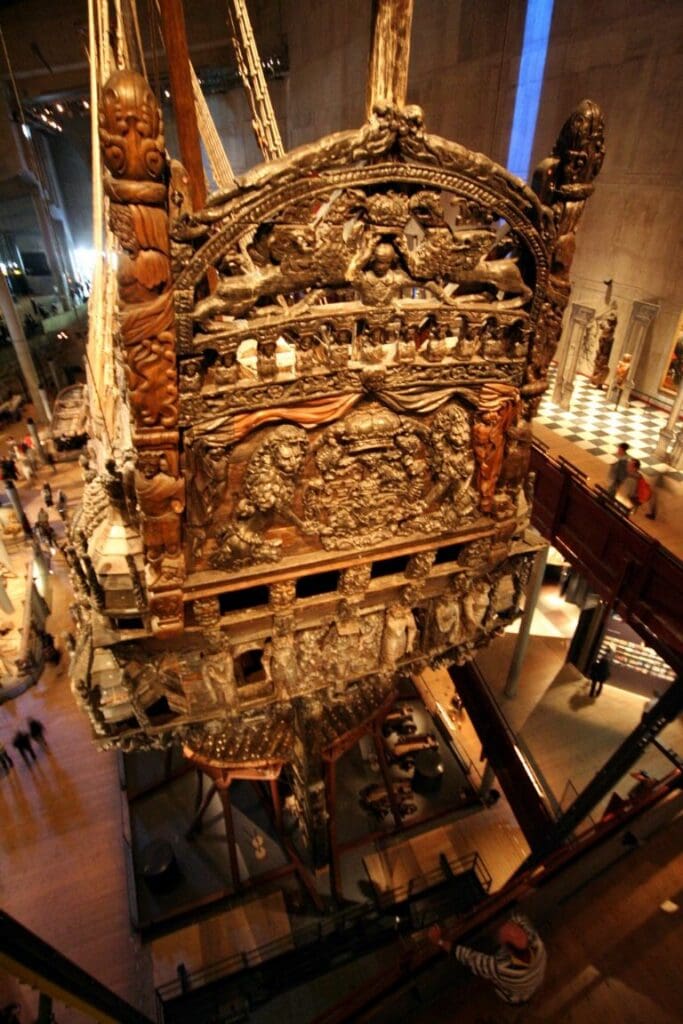
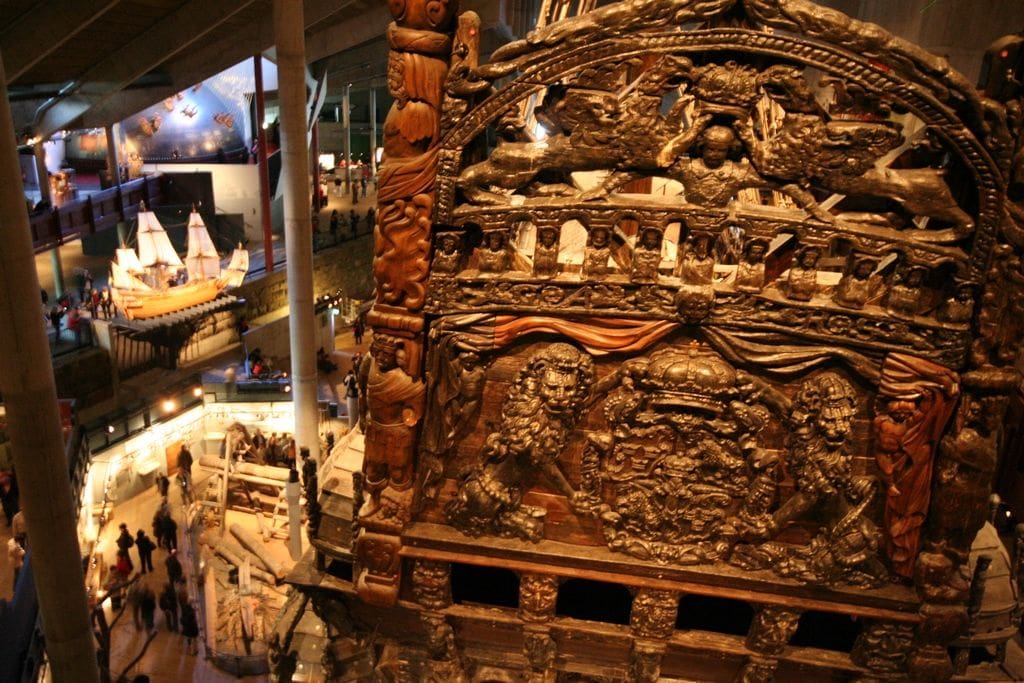
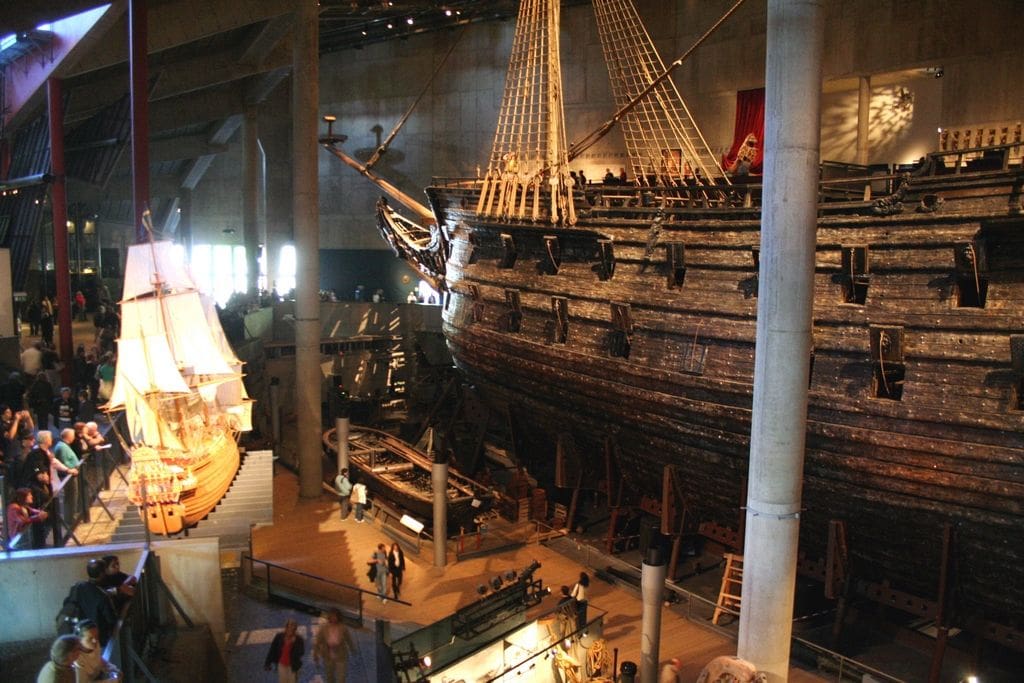
On a Baltic cruise to mark a birthday, the significance of which I’d prefer to forget, one of the ports of call was Stockholm. It’s a very attractive city but for me the highlight was a visit to the Vasa museum.
As many readers will know, the Vasa was an early Seventeenth century Swedish warship completed in 1628 as the pride of the navy of King Gustavus II Adolphus. No expense was spared in the construction and decoration of this magnificent ship which boasted hundreds of painted and gilded sculptures. Unfortunately not quite as much attention was paid to the basic principles of naval architecture. Despite alarming indications of instability while in dock immediately prior to her maiden voyage, political considerations dictated that she set sail regardless. The inevitable happened. Barely a mile into her first voyage a gust of wind heeled the vessel over and she rapidly sank with the loss of fifty lives. Although an acrimonious enquiry was immediately held, no one was ultimately found to be responsible. (Some things never change!) The reality was that the Vasa simply pushed the technical envelope of the time just that bit too far.
Enjoy more Model Boats Magazine reading in the monthly magazine.
Click here to subscribe & save.
Meanwhile, despite initial unsuccessful attempts to raise her, the ship settled on the bottom of Stockholm harbour where, except for the salvage of most of her cannon some 35 years later, she remained undisturbed for over three centuries. Her long slumber came to an end in 1956 when the ship was rediscovered by Anders Franzen, an engineer and expert on Sixteenth and Seventeenth century naval warfare. This marked the start of an epic salvage operation which finally saw the vessel brought to the surface in 1961. The brackish water of the Baltic is favourable to wood preservation and the Vasa was in such good condition that, incredibly, she was able to float unaided once the water had been pumped out of her. To prevent her waterlogged timbers from cracking as she dried out it was necessary to replace the water with a polyethylene glycol solution. As is presently the case with the Mary Rose at Portsmouth, this was done by spraying over a period of no less than 17 years. Similar techniques were used to preserve the thousands of artefacts found within the hull which give a unique and detailed snapshot of 17th century life at sea.
In 1988 the Vasa was moved to a new purpose built museum on the Stockholm waterfront where she can be seen today. Light levels are low in the museum and as your eyes gradually adjust, the huge vessel gradually assumes shape in the gloom. It is literally an awe inspiring sight. The preservatives used on the hull give it a brownish waxy appearance which in the subdued lighting imbues the ship with an almost ghostly effect, like something out of “Pirates of the Caribbean”.
Although the ship itself is the centrepiece of the museum and can be inspected closely at several different levels, the rest of the space is taken up with exhibitions of the story of the ship, her salvage and the items recovered from her. There are also full size tableaux showing life aboard including one of her main gun deck. Alongside the ship herself is a large scale model showing how she would have looked just before she capsized.
Seventeenth century warships were constructed to impress with their extensive colourful decoration and built up superstructure and the stern of the Vasa seems to go up forever when viewed from the waterline with level upon level of carvings and sculptures. The lower masts are in place and rigged with a combination of original and replica material and their tops disappear into the gloom overhead. Photography is difficult in the low light situation but I think the pictures convey something of the atmosphere of this ship from another age. I would have loved to have spent longer there but sailing time beckoned so we had to reluctantly leave, but not before visiting the museum shop where I purchased the guidebook and a genuine Vasa souvenir mug – dishwasher safe of course!
Modelling the Vasa.
Scratchbuilding a model of the Vasa would be a formidable task, if only because of the huge number of carvings and sculptures fitted to the ship. Salving the vessel meant that it was possible to draw up an accurate set of plans for a Seventeenth century warship and copies are available from the Vasa museum itself. Alternatively, copies of the Sergal kit plans can be obtained from Sergal distributors who advertise in Model Boats and on the Internet. For those wishing to take a slightly easier route, Sergal and Corel market three Vasa kit models, one at 160th scale, length 1180mm; one at 175th scale, length 890mm and a cutaway gun deck section at 124th scale.




